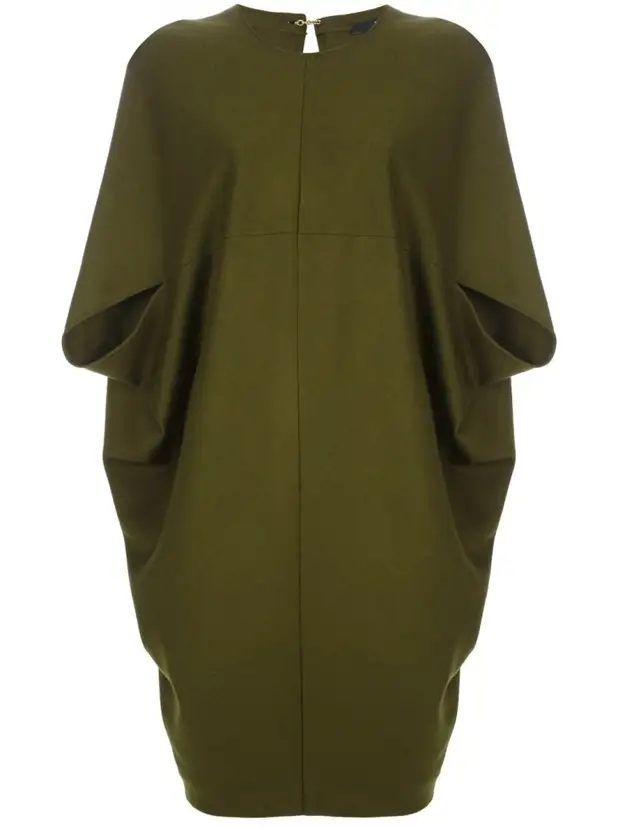
Question. Gucci dress. Help, please build a pattern.
Answer . In the comments, it was written in the comments that it looks like a dress from Burda Moden magazine, # 1 (2011). Constructive similarity is present in the design of the sleeve, or rather the cutout under the sleeve. The rest of the model is practically not similar. This dress is a much smaller bulk form, and the design is radically different.
To proceed to building a drawing of a design, let's break the main accents.
1. The shoulder belt in the model is explicitly expressed. Therefore, the shoulder seam is needed, but it will not go further on the sleeve. It can be issued in the form of a split outtur. In the model from the magazine of Burda Moden, the throat line as such is not. It is a slick-shaped form, formed by inflexion of a single-circuit part of the shelf.
2. By photo Visible seam in the field of sleeves, going from the side of the back, as well as a small swallow.
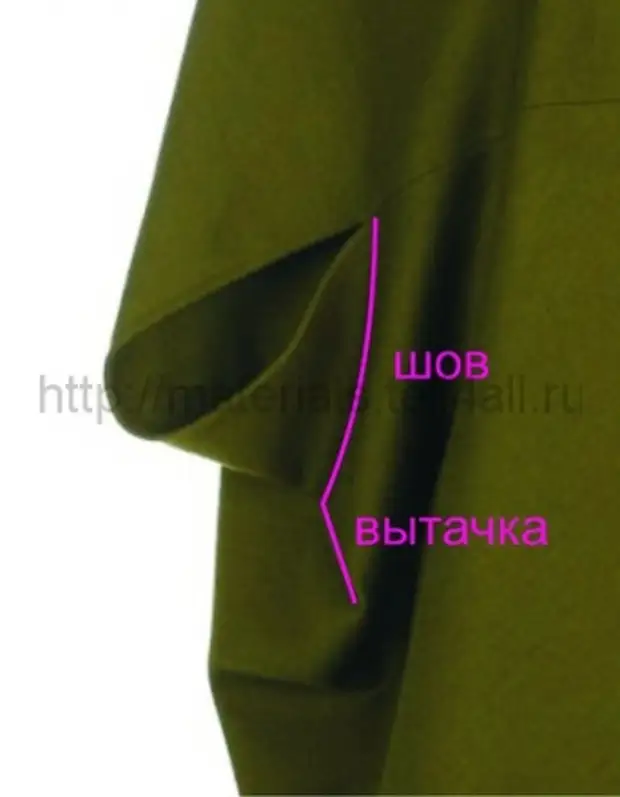
3. There is no side seam. The back and the lower part of the shelf are single-wall, and in the photo with close consideration it can be seen that the lower part of the shelf is cut at an angle of 45 degrees.
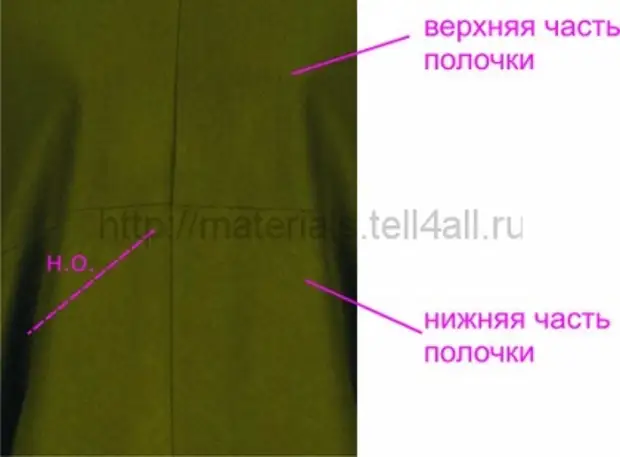
Preparatory stage.
To build a drawing of a model design, you will need templates of the backs and shelves, preferably without folding. Building such a design is easy to find on the Internet.
On the part of the shelves, we mark the position of the horizontal line. According to the model, it passes under the breast. You can lower a little lower. Take, for example, half the distance from the level of measurements of the grab of the fourth breast and waist girth.
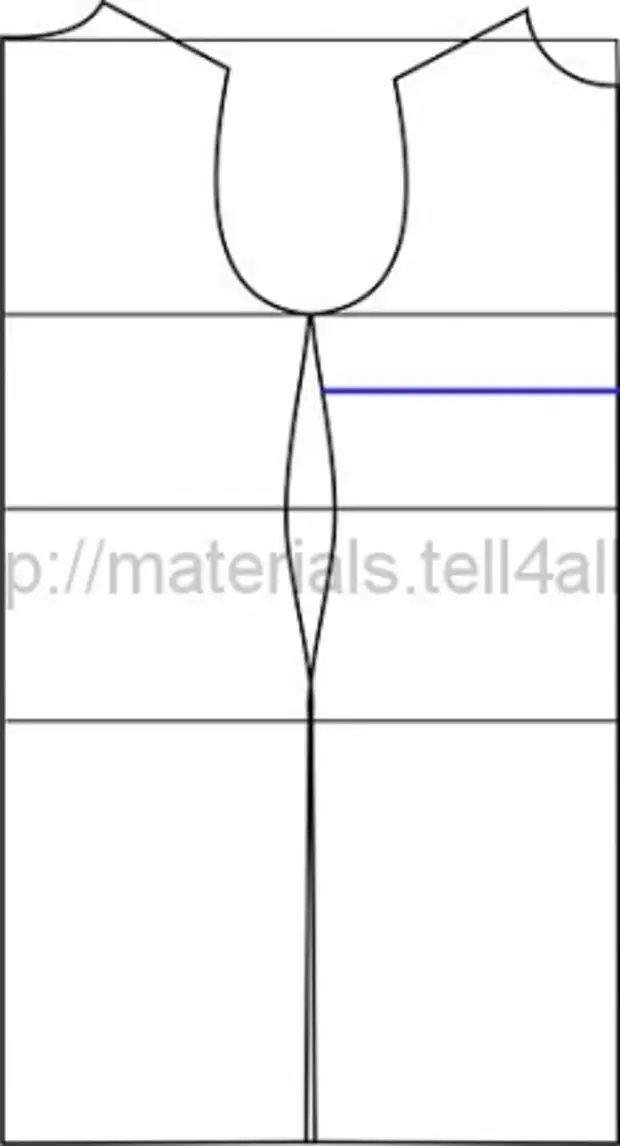
Immediately I want to note that the scheme will bring in templates performed on the scale. All major parameters you determine yourself at your discretion (the depth of the neck, the length of the shoulder line, the length of the dress, the width of the slopes and others).
I advise, before you start modeling on templates in full size, try all transformations to also perform on small templates.
Stages of modeling
1. Determine the desired length of the dress and the width below. Delay the parameters on the backs details.
2. From the ends of the shoulder backs and shelves, carry a line at an angle of 45 degrees. This line determines the slope of the sleeve.
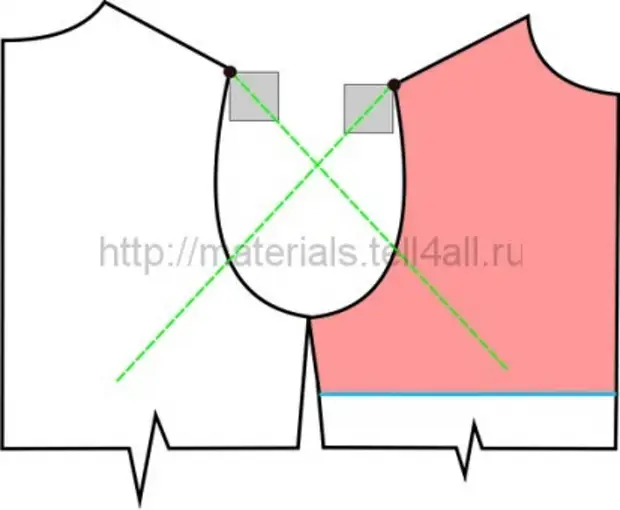
3. We translate the top part of the shelf part on the traction (or any paper) and we combine with the detail of the back on the line, which determines the slope of the sleeve. The sleeve of the seam is not, it is with a bend, and I propose a shoulder seam in the design.
We determine the desired cut length (point 1). We draw up the side line.
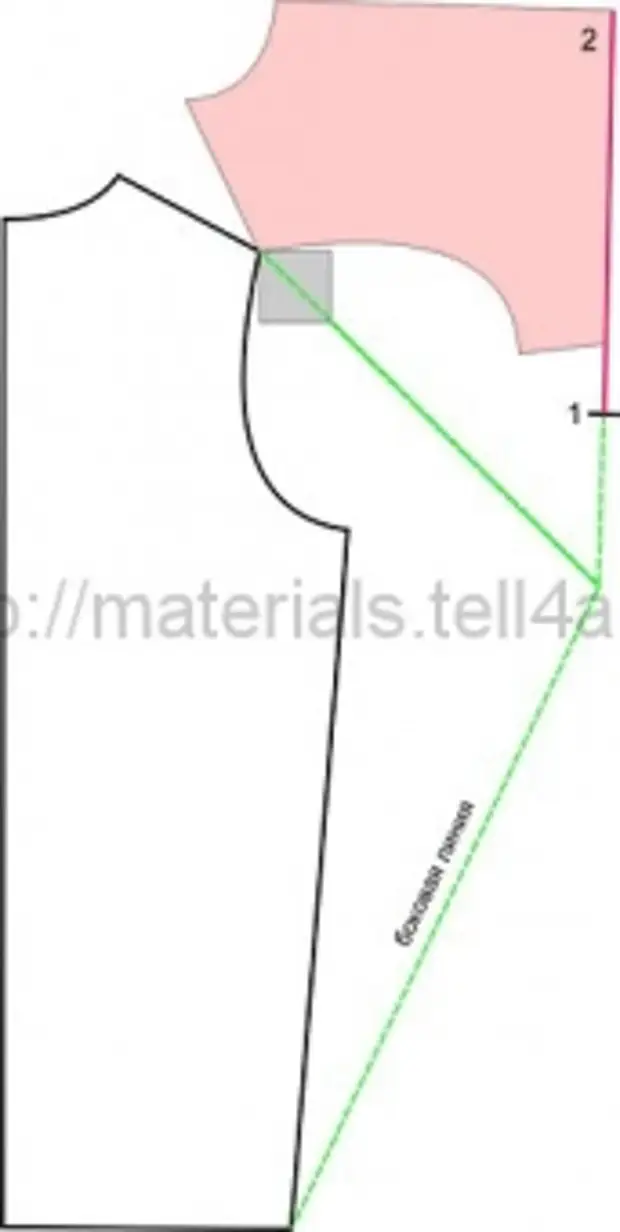
If you hold the line not from the end of the cut, and from its start, as Alain Zobromova offers, it is fraught with the fact that the dress will "rise" up due to lack of width at the measurement level of the shoulder diameter.
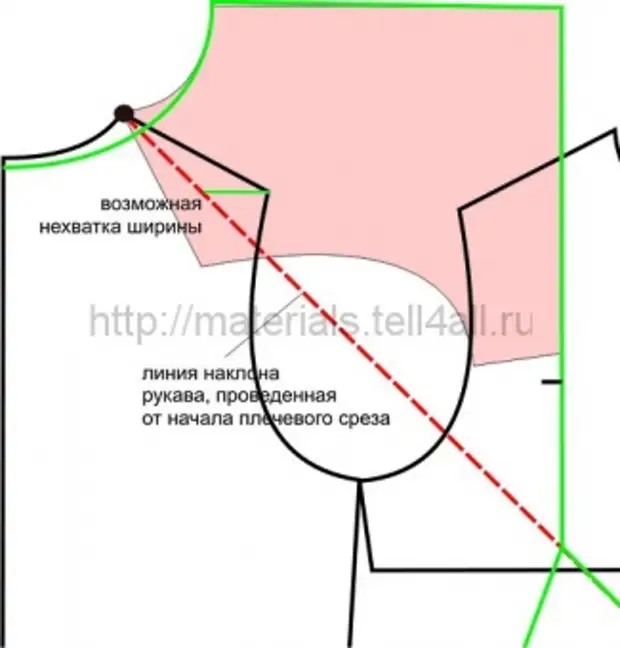
4. I will prolong the line defining the slope of the sleeve and lay the segments - the length of the section and the remaining shelf length (segment 1-2).
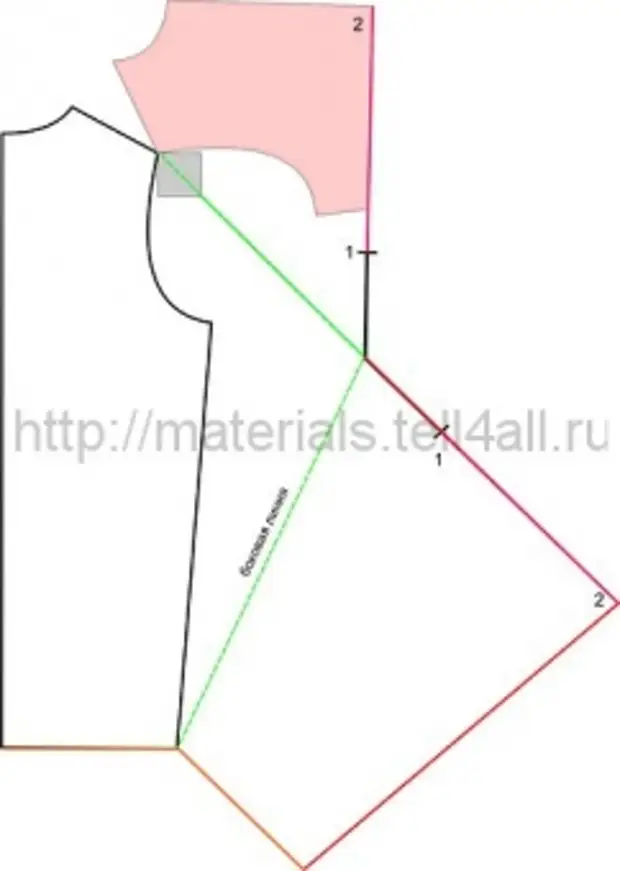
5. We declare the line of the subside (seam) and extract. Detail on the outlined lines cut and dilute. This technique allows you to add the widths of the part, which means to increase the volume. You can not do this. Stop at paragraph 4.
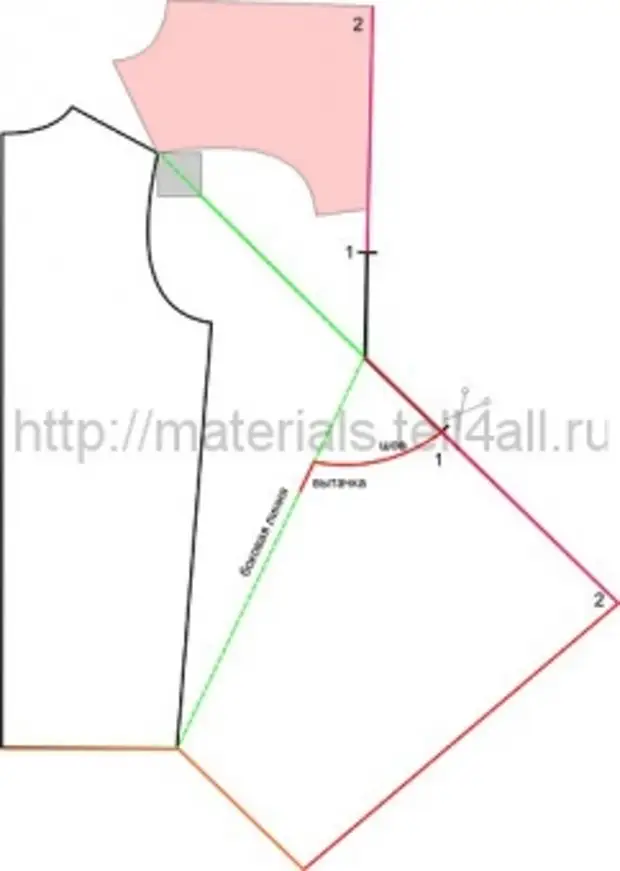
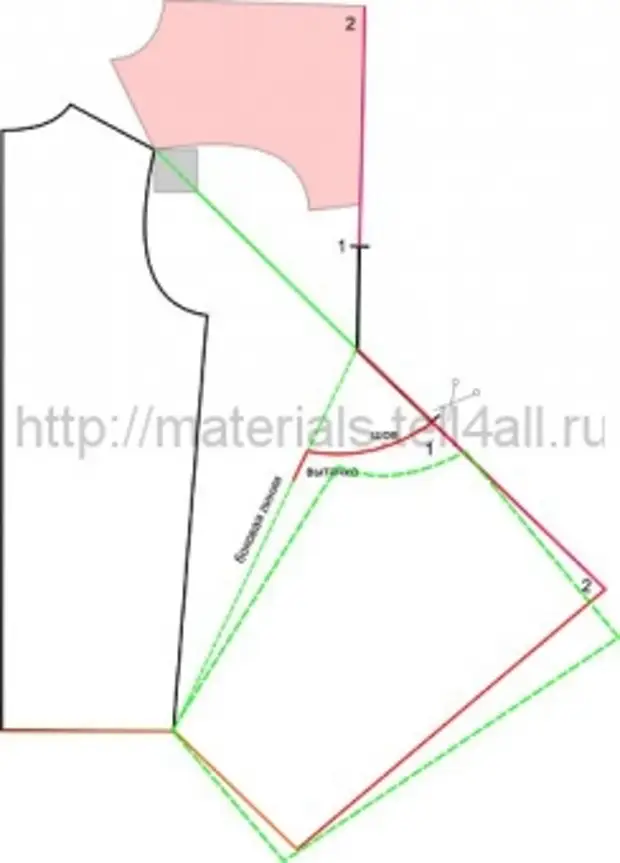
Thus, we have in the design of the shoulder seam, which should be stuck as a splitting outlet. There is no side seam. Sleeve form a shelf and wedge detail with a back detail.
Cutting should be made on the entire width of the fabric. Before making it is desirable to make a layout. This model is not mass production. Therefore, it is impossible to give unequivocal recommendations for the choice of specific values. Studies in the layout will allow you to determine the most precisely as possible all parameters, as well as evaluate the volume and silfoam form.
